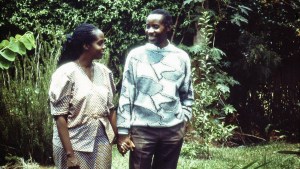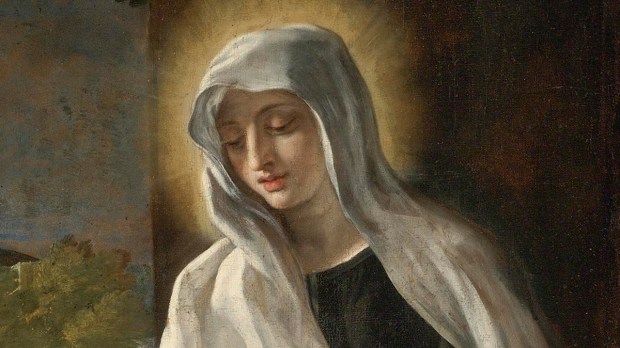Whether you’re grateful for your wonderful in-laws, seeking intercession for difficult relationships with your family-by-marriage, or looking for an example of how to be a good in-law, most of us would benefit from getting to know a few saints who modeled kind and generous behavior with their in-laws. These saints teach us how to love well, even with the difficulties that the union of two families can bring.
Read about last week’s saints as well:

St. John the Georgian (d. 1002) was an Iberian nobleman and a military commander who ultimately separated from his wife (with her consent) to be a monk. After freeing his son (St. Euthymius the Illuminator) from his captivity as a hostage of the emperor in Constantinople, John was joined by his brother-in-law (St. John Thornikos). Together the three men founded the Iveron monastery on the famed Mount Athos.
St. Elizabeth of Portugal (1271-1336) was the queen consort of Portugal and a peacemaker. She ended a war between her father and her husband; many years later she intervened to stop another between her son and his son-in-law. This last intervention on behalf of her grandson-in-law was too much for her failing health and led to her death soon after.
St. Frances of Rome (1384-1440) was an Italian introvert who was so overwhelmed by the social life required of her as a nobleman’s wife that she had a nervous breakdown. After finding healing, she discovered that her sister-in-law Vanozza also longed for silence and prayer. The two began to work together, helping each other in their daily tasks so that each could retreat into silence more often, making a little monastery of their mansion.
Blessed Lucy Yun Un-Hye (d. 1801) was a Korean woman who suffered gravely at the hands of her mother- and father-in-law, the parents of her husband Bl. Barnabas Jeong Gwang-Su. But she didn’t allow that to poison her against her sister-in-law; instead, she led Bl. Barbara Jeong Sun-mae to the faith. Barbara helped Lucy and Barnabas in their distribution of religious books until all three were arrested and martyred.
Bl. Columba Kang Wan-suk (1761-1802) was a Korean catechist and leader of the church whose mother-in-law loved her so much that when Columba’s husband divorced her, his mother chose not to stay with her son but to go with her ex-daughter-in-law. It was Columba who had brought her to the faith and Columba who led her in the faith until the day Columba was martyred.
Bl. Francis Choe Bong-han (1785-1815) was raised in a Christian family in Korea. Though drawn to celibacy, he submitted to pressure from his relatives and married the daughter of Bl. Barbara Ku Seong-yeol and Bl. Andrew Seo Seok-bong. He was arrested with his mother- and father-in-law during an Easter celebration. While in prison, Francis saw Barbara’s faith begin to fade. He encouraged her, saying, “It is a great honor and blessing to die for Christ.” He did the same for many others who wavered, earning himself a reputation as the leader of the Catholics in prison—and the torture warranted by his status as backbone of the community. Both Francis and Andrew died of their treatment before they could be martyred, but Barbara (strengthened by the encouragement of her son-in-law) was beheaded.
St. Michael Nguyễn Huy Mỹ (1804-1838) was a Vietnamese husband and father, the mayor of his village, a teetotaler, and a daily communicant who took great care to lead his children in prayer and to be a spiritual leader for his Christian village. When a persecution broke out, Michael was arrested with a priest (St. James Ðo Mai Nam) and his elderly father-in-law (St. Anthony Nguyễn Đích). In prison, Michael offered to take the place of his father-in-law when it was Anthony’s turn to be tortured. Three times he stood in for his father-in-law; in between torture sessions, he urged the older man to remain strong in the face of death. Michael’s wife and children visited them in prison to encourage them. The two men went on to be killed along with their priest.
Bl. Barbara Choe Jo-i (1782-1839) was a Korean woman who suffered greatly after the martyrdom of her father, Bl. Marcellinus Choe Chang-ju. Her suffering was only briefly interrupted during her short marriage, after which Barbara was left a young widow. But she wasn’t alone; her father-in-law, Bl. Peter Sin Tae-bo, welcomed her to stay in his home, where she lived for many years. When the two were arrested in 1827, Barbara was soon released, but continued to visit her father-in-law in prison, offering him whatever material and moral support she could for 12 years before she too was imprisoned and both were martyred.


